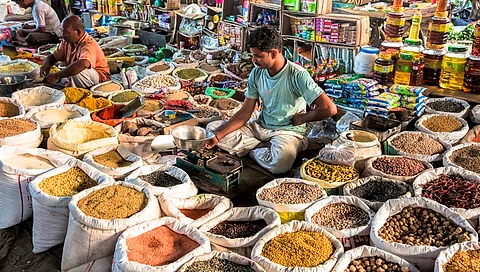

A new study by scientists at the International Crops Research Institute for the Semi-Arid Tropics (ICRISAT), the International Food Policy Research Institute (IFPRI), and the Center for Economic and Social Studies (CESS) has revealed something surprising: many Indians in rural areas suffer from protein deficiency in spite of producing sufficient protein-rich foods or being able to afford them.
The study was conducted across six states and nine districts. The researchers found that diets in these areas were dominated by cereals like rice and wheat, which contributed 60-75 per cent of daily protein intake.
But while these foods provide some protein, they lack the essential amino acids necessary for balanced nutrition, a statement by ICRISAT noted.
It is not that rural Indians cannot afford or produce sufficient protein-rich foods like pulses, dairy, eggs, and meat.
Rather, a mix of cultural food preferences, limited nutritional awareness, and financial constraints mean that these ingredients are underutilised in India’s villages.
“In only a small fraction of households, inadequate protein intake may be attributed to a lack of availability and affordability,” said the statement.
This, according to the study, challenges assumptions that malnutrition is an issue of affordability. Instead, it is perpetuated by deeply ingrained dietary habits, coupled with a lack of understanding about the importance of protein-rich foods.
Another important finding of the study was that households where women had higher levels of education were more likely to consume a balanced diet. “This finding reinforces the need to invest in female education and empowerment as a strategy for improving household nutrition,” the statement noted.
Yet another finding was that the Public Distribution System which provides subsidised food grains to two-thirds of Indians, while successful at improving calorie intake, has inadvertently reinforced a cereal-dominated diet while failing to provide sufficient protein-rich options.
Government food programmes should thus include more pulses, millets and other protein-rich foods so that nutritional outcomes can be improved.
“Another key finding of the study is that the factors that influenced households’ protein consumption varied across districts and states. Thus, region-specific strategies would be needed to promote balanced nutritional intake,” noted the statement.
It quoted Shalander Kumar, the study’s lead researcher and Deputy Global Research Program Director of the Enabling Systems Transformation Program at ICRISAT, as saying that simply increasing the food supply will not address malnutrition.
“Without targeted efforts to promote diverse diets and educate communities on the importance of protein, malnutrition will persist,” noted Kumar.
Integrating nutrition education into public health programmes and school curricula, empowering women, improving access to protein-rich foods through government schemes, and encouraging farmers to grow a wider variety of nutrient-dense crops promoting local food systems were some of the recommendations made by the researchers.